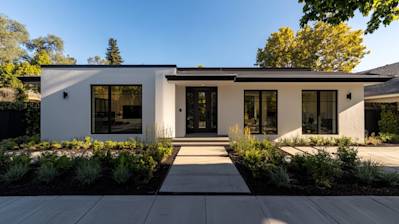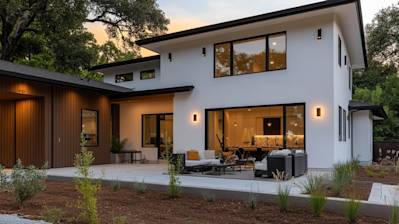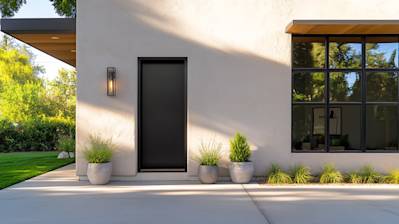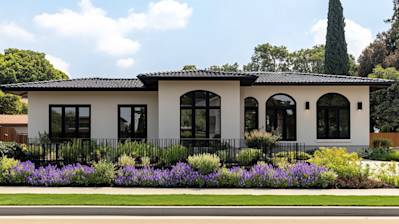When you've embarked on that renovation or refurbishment project, one of the key questions you'll find yourself asking is, "How long does plaster take to dry?" This is a crucial question, as the drying process impacts subsequent parts of your project, like painting or wallpapering. Hence, getting your head around the drying duration helps in scheduling your decorating activities. This comprehensive guide will delve into all you need to know about the plaster drying process.
What Is Plastering?
Before we dive into discussing the duration it takes plaster to dry, let's first understand what plastering entails. Plastering is a procedure used in building and construction to cover walls and ceilings. It achieves this by applying a protective layer of plaster, enhancing the appearance, and enabling customization of wall or ceiling textures.
Factors Affecting Plaster Drying Time
There are a couple of factors that can affect the time your plaster takes to dry. Understanding these can give you a better idea on planning and preparing for your project.
- Climate Conditions: This is a major factor affecting the drying time. In humid conditions, expect your plaster to take a longer time to dry. Conversely, in dry, hot climates, your plaster might dry faster than usual.
- Type of Plaster: Different types of plaster have different drying times. For instance, gypsum plaster can dry within 2-3 days, while lime plaster might take up to a week.
- Thickness of the Application: The thickness of your plaster layer will also affect the duration it takes to dry. Thicker layers typically take longer to dry compared to thin layers.
Drying Time for Different Types of Plaster
Here are some estimated drying times for two common types of plaster:
Gypsum Plaster
Gypsum, the most common type of plaster for indoor walls and ceilings, typically takes an average of 2-3 days to dry completely. For a 0.5-inch layer of gypsum plaster at room temperature, the drying period will be around 2-3 days. Also, to ensure even drying, avoid making sudden temperature changes in the room.
Lime Plaster
Lime plaster, a versatile and durable type of plaster, can take up to a week to dry completely. For this type of plaster, a 'set' time and a 'drying' time are involved. The plaster sets in about a day or two, but the complete drying process can take up to a week.
Tips for Ensuring Proper Plaster Drying
The technique applied during plastering, and the conditions post plastering, contribute to efficient drying. Below are some noteworthy tips:
- Maintain a gentle heat within the room where plastering took place. This creates an environment conducive for evaporation.
- Ensure there is good ventilation within the room. Open up the windows to allow in fresh air.
- Avoid cranking up your heat sources to speed up the drying process. Remember, sudden temperature changes can lead to cracks on your plaster.
Frequently Asked Questions about How Long Does Plaster Take To Dry
Does the Type of Plaster Impact the Drying Time?
Yes, indeed. The type of plaster you use can significantly alter the time it takes to dry. For example, lime plaster can take significantly longer to dry than gypsum plaster due to its composition. Each type of plaster has different drying needs, so it's always best to refer to any manufacturer instructions or seek advice from a professional.
How Can I Speed Up the Plaster Drying Time?
While natural drying is always recommended, there are some ways you can speed up the drying process. However, these should be used cautiously to prevent any damage to the plaster. You can improve ventilation in the room by opening windows and doors. And if the room is secure, you can use fans or dehumidifiers to help expedite the process.
How Will I Know When the Plaster is Completely Dry?
You'll be able to tell when your plaster is completely dry based on its color. Wet plaster is often a darker color, and as it dries, it becomes lighter. Once the plaster has achieved a uniform, pale color, it is usually an indication that it has fully dried.
Can I Dry Plaster Using a Blow Heater or Radiator?
Using heat to try and dry plaster quicker can cause it to dry unevenly. This might lead to cracking or other damage. Therefore, while it might be tempting to use a blow heater or a radiator to hasten the drying, it's generally not recommended unless done very carefully.
What Happens if Plaster Doesn't Dry Properly?
If plaster does not dry properly or is forced to dry too quickly, it can lead to a variety of issues. These can include discoloration, cracking, and even damage to the structure. Uneven drying can also damage the surface finish, which can lead to costly and time-consuming repairs.
What Impact Does Room Humidity Have on Plaster Drying?
Humidity levels in the room where plaster is drying can have a significant impact on drying time. High humidity levels can lengthen the drying process, while low humidity can speed up the process. However, if plaster dries too quickly due to low humidity, it can lead to cracking or other issues.
How Does the Plaster Thickness Influence the Drying Time?
The thickness of the plaster application can significantly affect drying times. Thicker plaster applications will take longer to dry than thin ones. This relationship comes from the simple reality that there is more moisture in a thicker application that needs to evaporate.
Can I Paint Over Plaster Before It's Fully Dry?
While it may be tempting to get as much done as possible, painting plaster before it's fully dry is typically not recommended. Painting over damp plaster could cause problems with paint adhesion and finish quality. Additionally, trapped moisture could lead to future issues like bubbling or peeling paint. It is always best to wait until the plaster is entirely dry before painting.
Pros of Waiting for Plaster to Dry
Speed is Not Usually Necessary
One of the benefits of allowing plaster to dry naturally is that it isn't generally a process that needs to be rushed. Plaster work is typically done during the remodeling or construction phase, so time is generally on your side. Waiting for plaster to dry ensures better results in the end.
Drying Naturally Prevents Cracks
A second pro to letting plaster dry naturally is that it helps to prevent cracks. If plaster is forced to dry too quickly, it might shrink unevenly, creating tension which results in cracks. Allowing the plaster to dry over a longer period minimizes this issue.
Less Energy Usage
By allowing plaster to dry on its own, you avoid the need for using any specialised equipment to speed up the process, such as heaters or fans. This naturally leads to less energy consumption, which is both a cost-saving measure and better for the environment.
Better overall finish
Waiting for plaster to thoroughly dry ensures that paint or other finishes adhere better. When plaster is still retaining moisture, paint can peel or chip off easily, which obviously affects the overall look of the walls. Hence, allowing the plaster to dry completely can result in a more polished finish.
Cons of Waiting for Plaster to Dry
Process Can Take a Long Time
The most obvious downside is the amount of time it takes for plaster to fully dry, which may be anywhere from a few days to even weeks for thicker applications. This can be a real setback if you're running to a tight schedule, as it can delay other parts of the renovation or construction process.
Delays in Project Completion
Because the plaster must be completely dry before you can move on to the next step of your project - such as painting or hanging wallpaper - this can significantly delay the completion of your project. Each day that you have to wait for the plaster to dry is another day that your project is not moving forward.
Inconsistent Drying Times
There is no exact science to how long plaster takes to dry because it depends on so many variables. Factors such as thickness of plaster, the mixture, the material it's applied to, humidity and temperature can all affect how long it takes to dry. This lack of predictability can be difficult when trying to plan out a project.
Additional Costs
While allowing plaster to dry naturally can save on energy costs, it can also lead to additional costs in terms of labor and potential project delays. If a contractor is employed, they may need to make multiple visits or keep rescheduling due to the plaster still drying, which can inadvertently raise costs.
Higher Risk of Damage
Wet or even semi-dry plaster is vulnerable to being dented or marked. If other works are ongoing in the vicinity, there is a heightened risk of accidental damage. This can negatively impact the aesthetic appearance of the plastered area and may require patch jobs or touch ups.
Poses an Issue During Wet Seasons
During wet seasons, increased humidity can slow down the drying process considerably, sometimes doubling or even tripling the normal drying time. This poses a significant issue if you have a strict timeline for your renovation or building project. Additionally, the moisture in the air could be absorbed back into the plaster, causing it to remain perpetually damp if not properly controlled.
Timeframe Limitations
The longer timeframe required to let plaster dry doesn't lend well to projects that are time-sensitive. Especially in professional projects where deadlines are tight, waiting for plaster to dry naturally is likely to cause significant delays and even penalties.
Summary
So, we've covered quite a bit about how long does plaster take to dry, haven't we? The usual drying time for plaster is between 24-48 hours. However, keep in mind that it could take up to a week or even longer depending on the environment and the thickness of the layer. It's all about moisture evaporating. Remember, the faster that happens, the quicker your plaster will be bone-dry, ready for whatever you have planned next.
Know this, though: patience is key. Rushing the drying process is a sure way to end up with cracked and brittle plaster. We do not want that, right? So, create the appropriate environmental conditions for your plaster to dry naturally. And, it's okay if you're feeling impatient. Just think about the wonderful project you are going to unveil once it becomes completely dry.
Overall, understanding how long does plaster take to dry is a little more complex than just watching paint dry. It involves some science and a fair bit of patience. Don't let that discourage you! Once you have accounted for these factors, you'll find that it's easy to predict when your plaster will be ready. It's part of the fun and satisfaction of working with plaster. Now, go forth, be patient, and plaster on!
About Atlas Stucco
Atlas Stucco based out of Sacramento, CA, has a rich history of adding exquisite beauty to buildings with their exceptional stucco work. Priding ourselves on craftsmanship, our team of experts provides stucco services to both commercial & residential establishments, with an unwavering commitment to quality. Our stucco solutions are not only aesthetically appealing but also stand the test of time. With Atlas Stucco, it’s not just about plastering walls, it's about creating a work of art that brings your vision to life.
Tags: plaster drying time, drying plaster, drying process,








